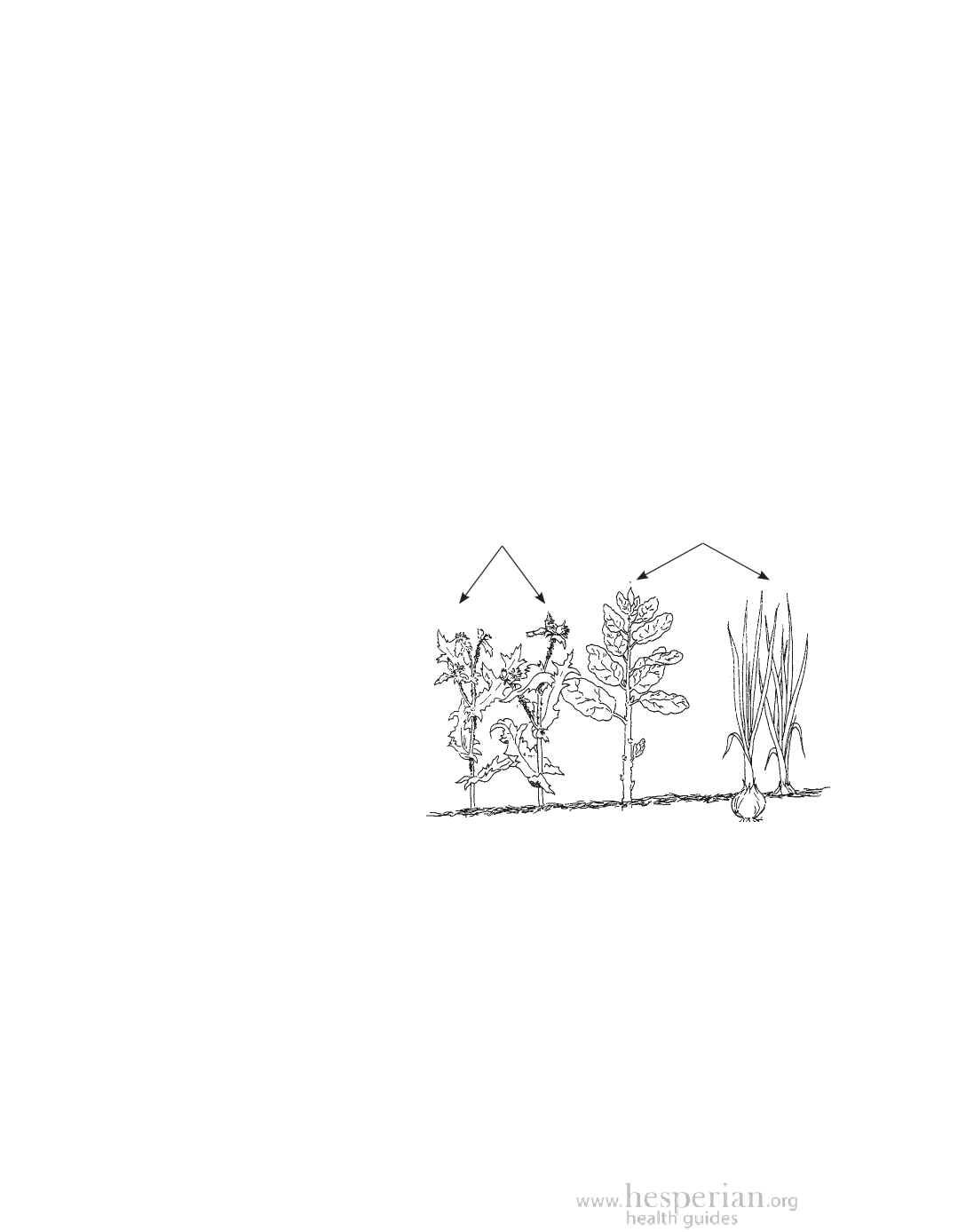
300 Sustainable Farming
Change crop patterns
Crops in the same plant family can get the same pests and diseases.
For example, if you always plant potatoes in the same field, potato beetles may
come to live and breed in that field. But if every 3 years you plant something
they cannot eat, the beetles will leave or die. The third year crop must not be
a relative of potato, like tomato or pepper. It should be something completely
different, like maize. This is called crop rotation. 2 ways to prevent disease and
pests are to rotate crops and to plant a variety of crops together.
Rotate crops
Rotating crops (changing the crops you grow in a particular field) controls
diseases and pests by depriving them of food. It will also improve the soil by
adding different nutrients. For example, rotating grains in one season with
beans in the next will make the soil richer. Grains grow tall and provide
organic matter, while beans add nitrogen to the soil.
Plant a variety of crops together
Planting different types of
crops provides places for
useful insects to live and
makes it harder for pests to
find the crop they like to eat.
Growing many types of crops
also improves food security,
because if one crop fails, there
are others to use. Planting
different crops next to each
other protects against pests in
these ways:
• Some strong smelling
herbs and vegetables keep
away pests.
• Some flowers attract
predators that eat pests.
Milk thistle plant
attracts harmful aphids.
Food crops nearby
have few aphids.
Trap plants attract pests away from your crops.
• Some plants “trap” pests. This is the opposite idea from keeping pests
away. If you plant something that pests like better than your crop, they
will stay on the “trap plant” and leave your crop alone.
Farmers also combine trees with animals and crops to increase the benefits of
each of them (see page 302).
A Community Guide to Environmental Health 2012